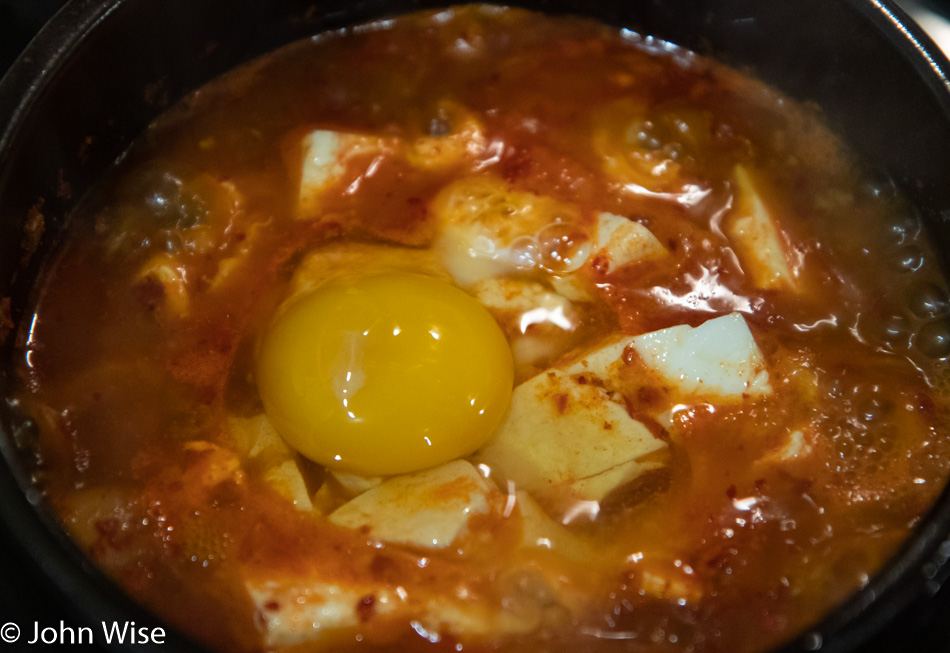
In our ongoing travels while at home, we are visiting Korea tonight via our kitchen. About a month ago I made our very first sundubu after following a recipe to make a batch of sundubu paste. I wasn’t sure we’d like it so I didn’t bother to photograph our boiling cauldron of Korean tofu stew. Turns out we loved that first attempt with mushrooms and clams and so I researched other recipes. While the paste came from the Youtube couple known as Future Neighbor, it was Maangchi (also on Youtube) that helped us turn up the skills and flavors tonight. If you are wondering why this blog entry is listed under the bean category, well you have to remember that tofu is made from soybeans!
We already had our supply of sundubu paste in the freezer and ready to go but from Maangchi (4.8 million subscribers, the woman is popular) I learned that we could enhance our Korean cooking skills by using myeolchi dasima yuksu instead of water. What that translates to is anchovy kelp stock. A visit a few weeks ago to our local Korean store called Seoul Market over on 43rd Avenue allowed us to pick up the ingredients we’d never find at Safeway. We needed dried anchovies, Korean radish, and dasima which is dried sea kelp. Getting across to the Korean owner what I was looking for regarding the dasima was a bit of an effort but he finally realized what I was trying to say and took us to its secret location on the bottom of a shelf. The stock is straightforward to make after removing the heads and guts of the dried fish and adding sliced radish and a large piece of kelp. Thirty minutes later I had a pale yellow fishy stock and was ready to make our stew.
A half-cup of stock, a couple of tablespoons of sundubu paste, half a cup of chopped kimchi, and some silken tofu came to a boil before I cracked an egg on top, and in no time we were seriously enjoying an amazing bowl of kimchi sundubu-jjigae.
Neither Caroline nor I grew up eating these kinds of foods and typically we’ve relied on Korean restaurants in Los Angeles or on rare occasions the only reasonable one here in the Phoenix area [Hodori in Mesa – Caroline]. With the great fortune of having people from around the world sharing skills via Youtube and the Internet in general, we are able to bring the cuisine of other cultures right into our home. I’d like to make the distinction that I’m looking for authenticity, not Americanized versions inspired by the idea of what another culture eats. It’s been rare for us to find real Italian food in America, Chinese cooking is only available rarely in cities like San Francisco, Burmese might be featured in five restaurants across our country but they need not cater its flavors for us as Americans typically don’t search it out. Caroline being German and I having an appreciation for the food have never found a great German restaurant in America as we sampled places from Maine to Oregon. The irony is that most of the ingredients to make ethnic foods close to how they are experienced in the countries of origin are available here in the United States. The trouble is that our palates are not very sophisticated on the whole and many people recoil at the foods they are unfamiliar with, so we get pasta with marinara sauce, orange chicken, and burritos with rice and a safe meat instead of tongue or udder.
Adaptability and the desire to stretch out regarding our expectations should be nurtured as there is treasure to be found in new experiences.